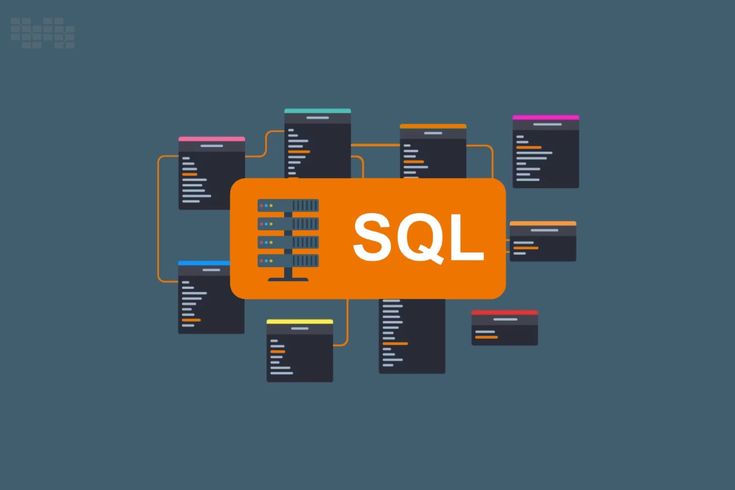In the fast-paced world of the internet, speed is survival. When your website is handling thousands or even millions of visits every month, your database isn’t just a background component. It’s the heartbeat of your application. A single poorly optimized query or an unindexed column can throttle your entire system.

That’s why this comprehensive guide is here to walk you through battle-tested database optimization tips tailored for high-traffic websites. Whether you’re scaling a SaaS product, an eCommerce store, or a content-heavy blog, this guide has you covered.
1. Understand Your Database Architecture
RDBMS vs NoSQL: Choose Wisely
High-traffic sites must choose the right type of database from day one. If your data is highly structured with relationships (e.g., orders linked to customers), relational databases like MySQL, PostgreSQL, or MariaDB shine. But if you need scalability and flexibility (e.g., user sessions, logs), NoSQL databases like MongoDB, Redis, or Cassandra might be a better fit.
Schema Design: Normalization vs Denormalization
- Normalization helps remove redundancy and ensures consistency. But too many joins on high-traffic sites can slow things down.
- Denormalization reduces joins by storing related data together, perfect for read-heavy operations.
Choosing the Right Storage Engine
In MySQL:
- InnoDB supports row-level locking and ACID compliance, which is great for transactional systems.
- MyISAM is faster in read-heavy environments but lacks transactions and data integrity.
Vertical vs Horizontal Scaling
- Vertical Scaling: Add more CPU, RAM, or SSD to your DB server.
- Horizontal Scaling: Distribute the load with read replicas or sharded DBs.
2. Indexing Strategies
Indexes are like signposts for your database; without them, your queries wander aimlessly.
Types of Indexes:
- B-Tree Index: Default in most DBs. Fast for ranges and lookups.
- Full-Text Index: Great for searching text fields (blog content, product descriptions).
- Composite Index: Multiple columns combined into one index.
Best Practices:
- Index the columns you search or join on.
- Avoid over-indexing, it slows down writes.
- Use covering indexes to avoid touching the table.
- Keep index size optimized as large indexes = slow performance.
Real-Life Example:
If you run a search on SELECT * FROM products WHERE category_id = 3 AND status = ‘active’, create a composite index on (category_id, status) to boost performance.
3. Query Optimization
Even the best-indexed database can choke on poorly written SQL.
Use EXPLAIN or ANALYZE
Run EXPLAIN SELECT … to see how your DB processes queries. Avoid full table scans.
Avoid SELECT *
Always select only the columns you need. SELECT * loads unnecessary data.
Optimize Joins
- Use INNER JOIN over OUTER JOIN when possible.
- Ensure joined fields are indexed.
Subqueries vs Joins
Use joins instead of subqueries when feasible, they’re often faster and more readable.
Batch Queries
If you’re inserting/updating/deleting multiple records, do it in batches:
INSERT INTO logs (user_id, action) VALUES (1, ‘login’), (2, ‘logout’), (3, ‘signup’);
Cache Frequent Queries
Use Redis or Memcached to store the results of expensive or repetitive queries.
4. Connection Pooling & Load Distribution
When hundreds of users hit your database at once, connection management becomes a bottleneck.
Connection Pooling
Tools like PgBouncer (PostgreSQL) and ProxySQL (MySQL) maintain pools of persistent connections.
- Reduces the overhead of establishing new connections.
- Helps prevent max connection errors.
Load Balancing
- Use read replicas for SELECT queries.
- Route writes to the primary/master node.
- Consider multi-master setups for write-heavy apps, but be cautious of conflicts.
5. Caching Mechanisms
A fast database is a DB that isn’t always being queried.
Use In-Memory Caches
- Redis or Memcached are ultra-fast key-value stores.
- Ideal for storing session data, frequent queries, product lists, etc.
Cache Expiry
- Set intelligent TTLs (Time-To-Live).
- Invalidate cache on updates or use versioned cache keys.
CDN + Caching Layer
- Offload static content and APIs using CDNs with built-in caching (e.g., Cloudflare).
- Reduce DB hits dramatically.
6. Partitioning & Sharding
As your database grows, you may need to split it into manageable pieces.
Partitioning
- Split large tables by date, region, or ID range.
- Easier to query recent data quickly.
Sharding
- Distribute data across multiple databases.
- Example: User data for IDs 1-100K on DB1, 100 K- 200 K on DB2, etc.
Carefully plan your sharding logic; it’s hard to undo.
7. Storage & Hardware Optimization
Use NVMe SSDs
- NVMe drives offer blazing-fast read/write compared to traditional SSDs or HDDs.
- Perfect for I/O-heavy workloads.
Optimize RAM and CPU
- Allocate enough RAM to buffer pools and query caches.
- Choose CPUs with high single-thread performance for complex queries.
RAID & Replication
- RAID 10 for performance + redundancy.
- Use DB replication for fault tolerance.
8. Monitoring, Auditing & Logging
Use Monitoring Tools
- Percona Monitoring & Management
- Datadog, New Relic, Zabbix
- Monitor query performance, resource usage, slow queries, etc.
Log Analysis
- Enable and analyze slow query logs.
- Rotate logs to prevent disk bloat.
Real-Time Alerts
Set up alerts for spikes in query time, CPU load, or failed connections.
9. Security & Best Practices

- Use parameterized queries to avoid SQL injection.
- Restrict database user permissions: apply least privilege.
- Encrypt sensitive data at rest and in transit.
- Rate-limit endpoints to avoid brute-force and abuse.
10. Final Thoughts
Database optimization is not a one-time task, it’s a continuous process. As your site grows, so do your data and performance needs. Start with solid architecture, monitor constantly, and tweak aggressively. A well-tuned database can mean the difference between a lightning-fast user experience and a sluggish, frustrating one.
If you’re hosting with platforms like Nest Nepal, make sure you’re taking advantage of features like NVMe SSDs, OPcache, dedicated MySQL instances, and Redis support. They give you the foundation to scale smartly.